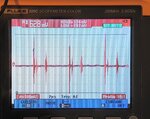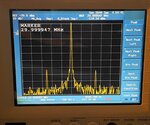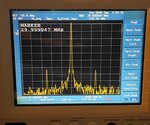hafrse
Full Member level 3
Suspected high ripple on SMPS 0.628v at 12v
Hello,
I have a problem with an analyzer which shows spurs from CW 50hz (highest amplitude) , 15hz,350hz,etc... suspected the power supply and checked one of the voltages -12V and there is a ripple of about 0.63 volts, the same ripple is on other output voltages. Is this normal ? problems in the mains rectifier electrolytes (180uf 450V) ?
attached a picture of the power supply and trace of the ripple on the -12v.
Thnaks for any input
Hello,
I have a problem with an analyzer which shows spurs from CW 50hz (highest amplitude) , 15hz,350hz,etc... suspected the power supply and checked one of the voltages -12V and there is a ripple of about 0.63 volts, the same ripple is on other output voltages. Is this normal ? problems in the mains rectifier electrolytes (180uf 450V) ?
attached a picture of the power supply and trace of the ripple on the -12v.
Thnaks for any input
Attachments
Last edited:



